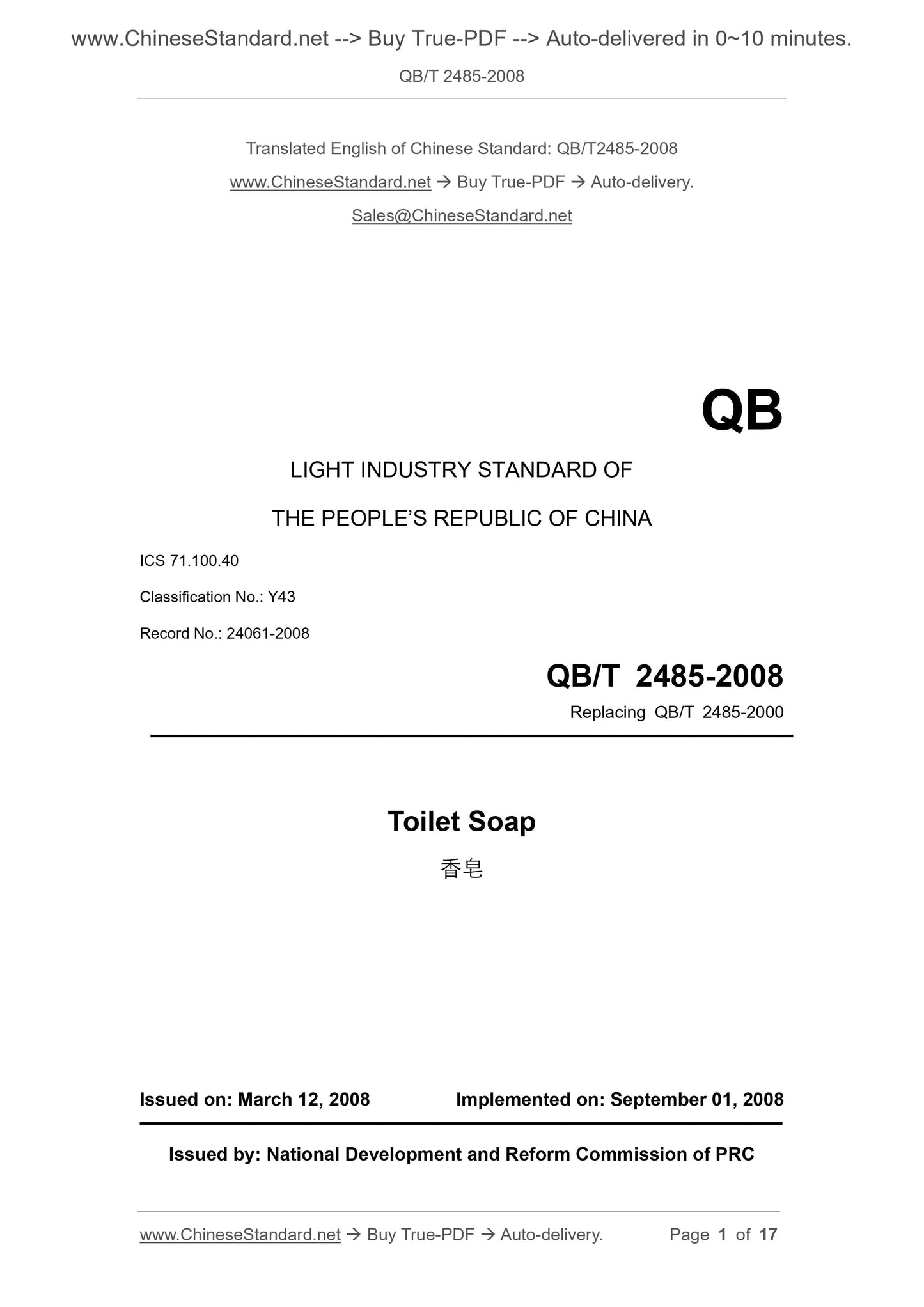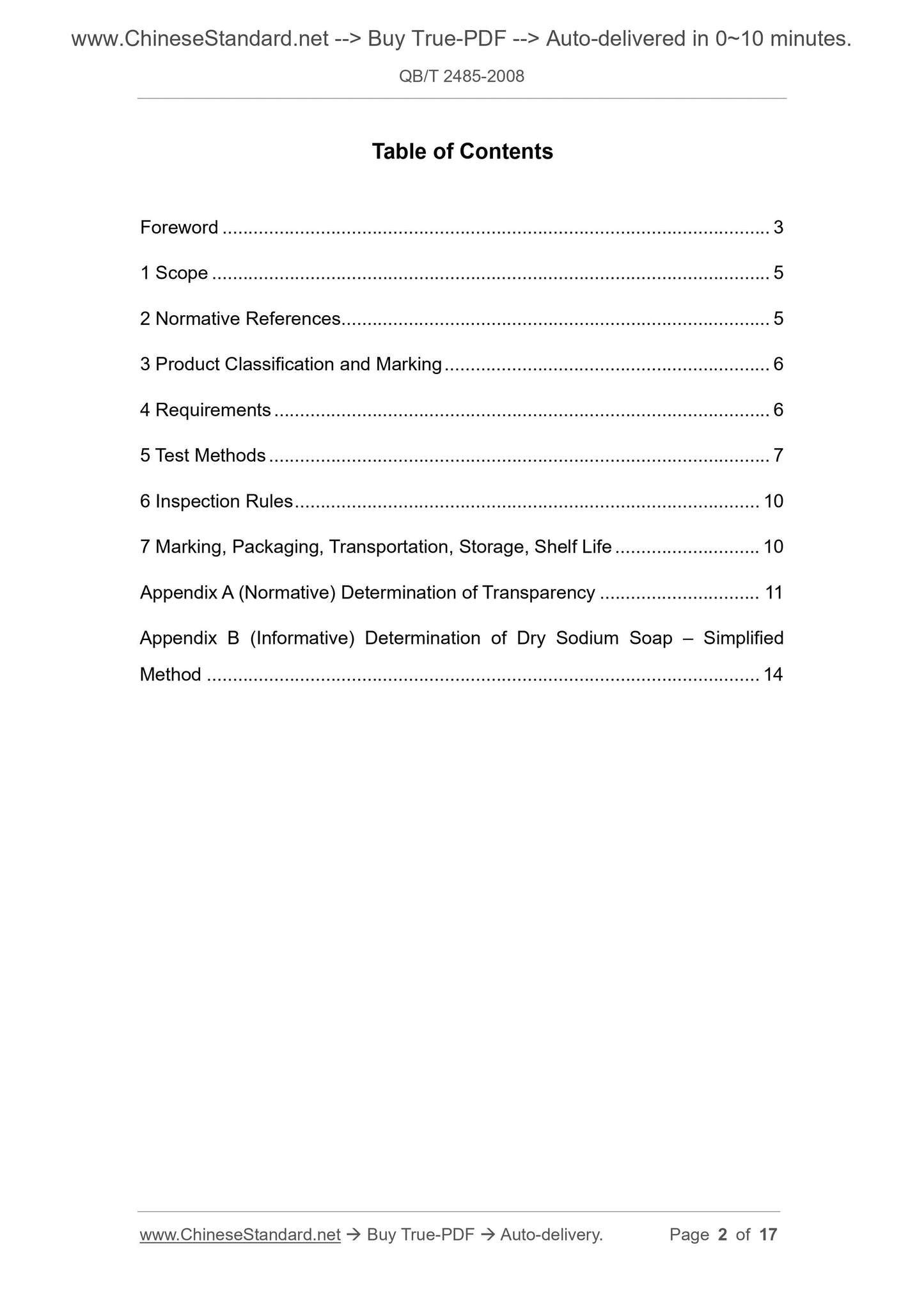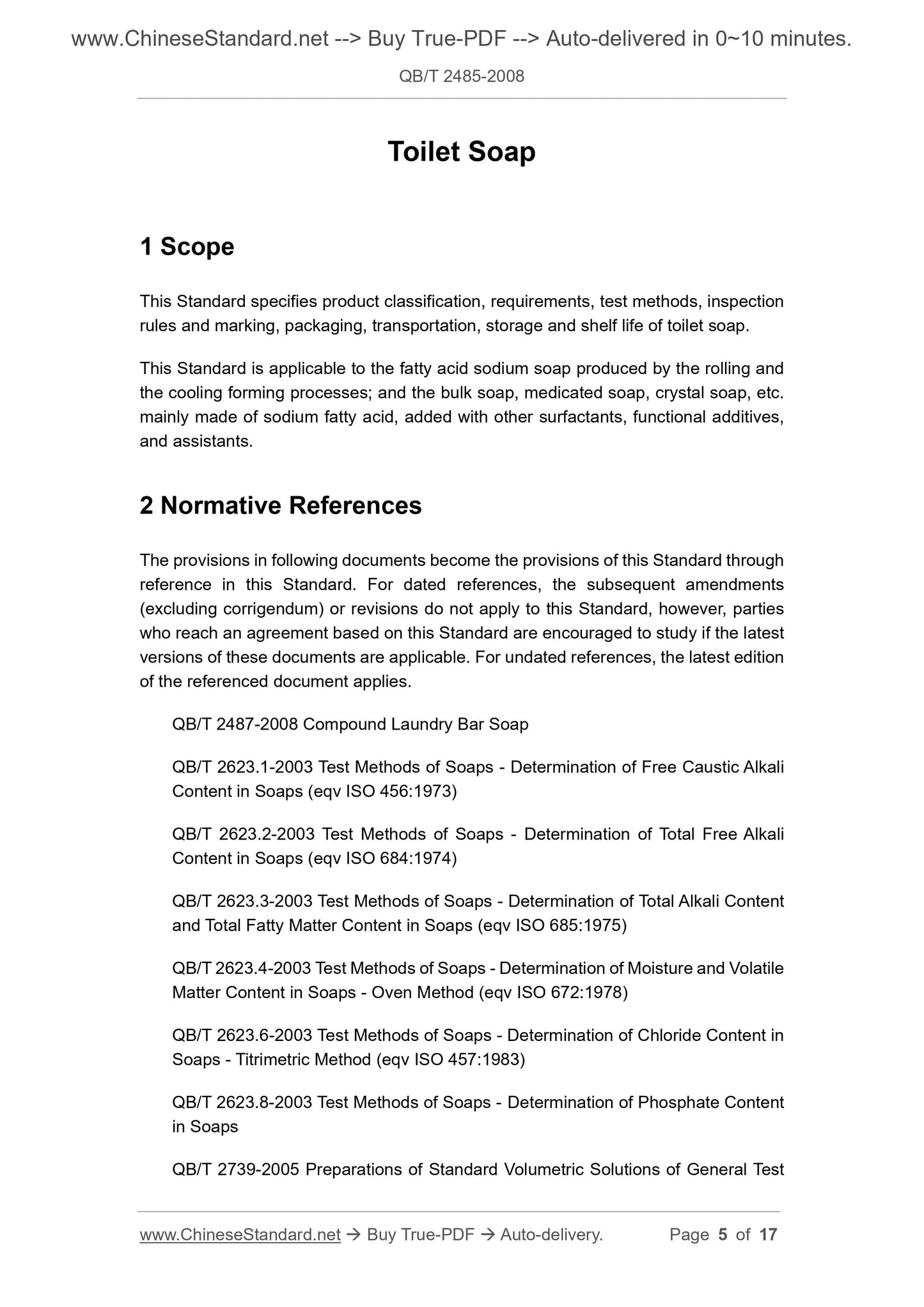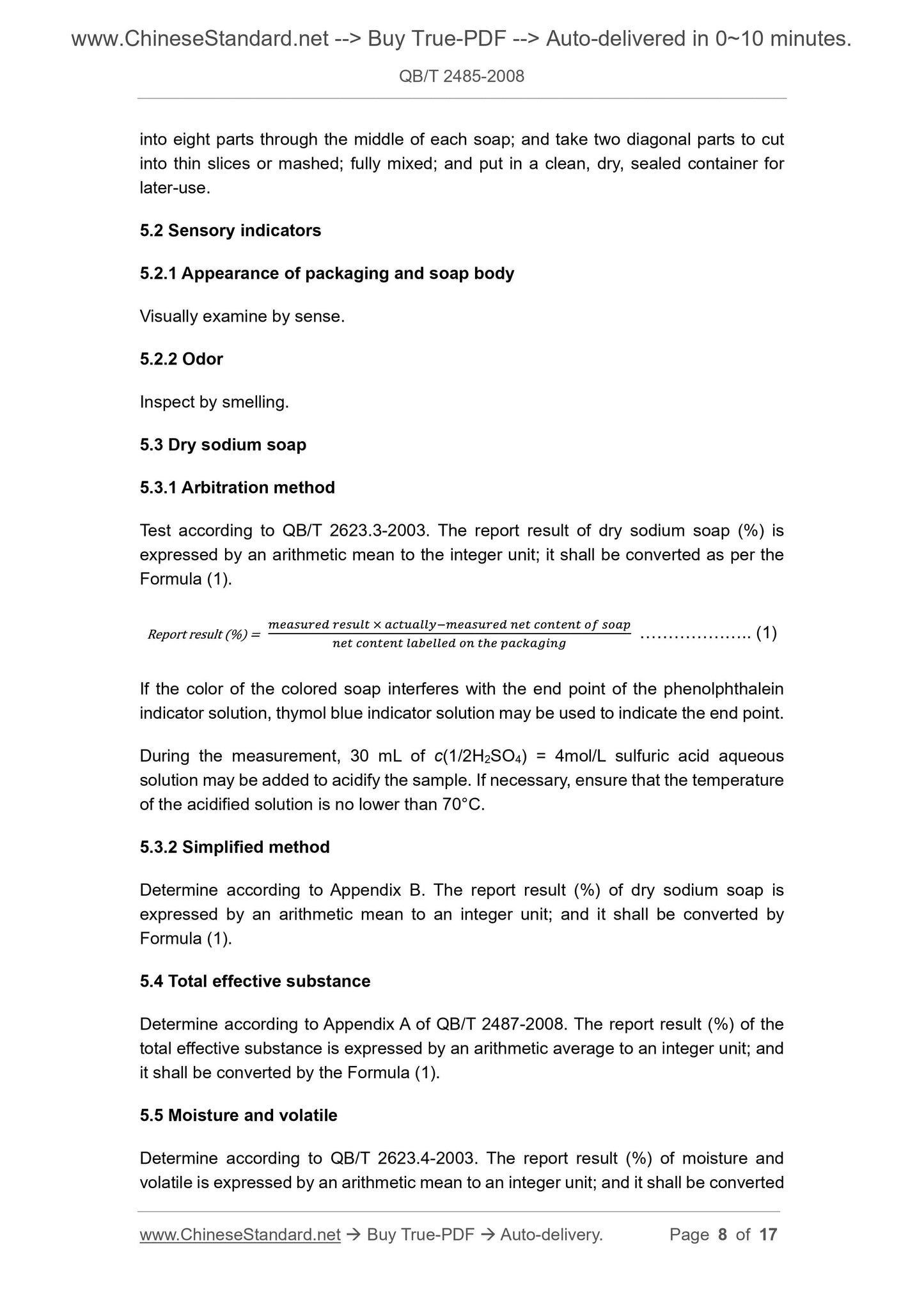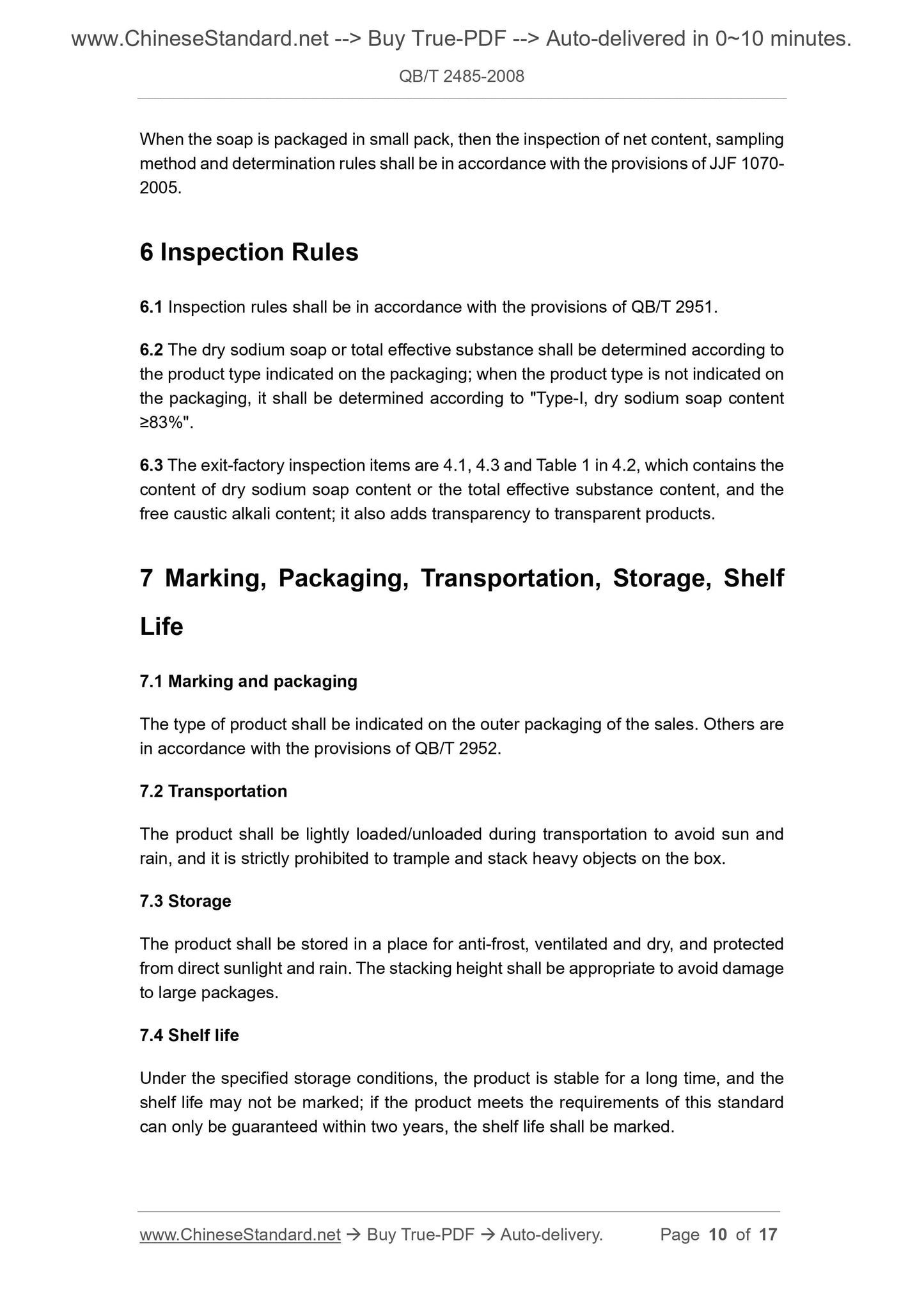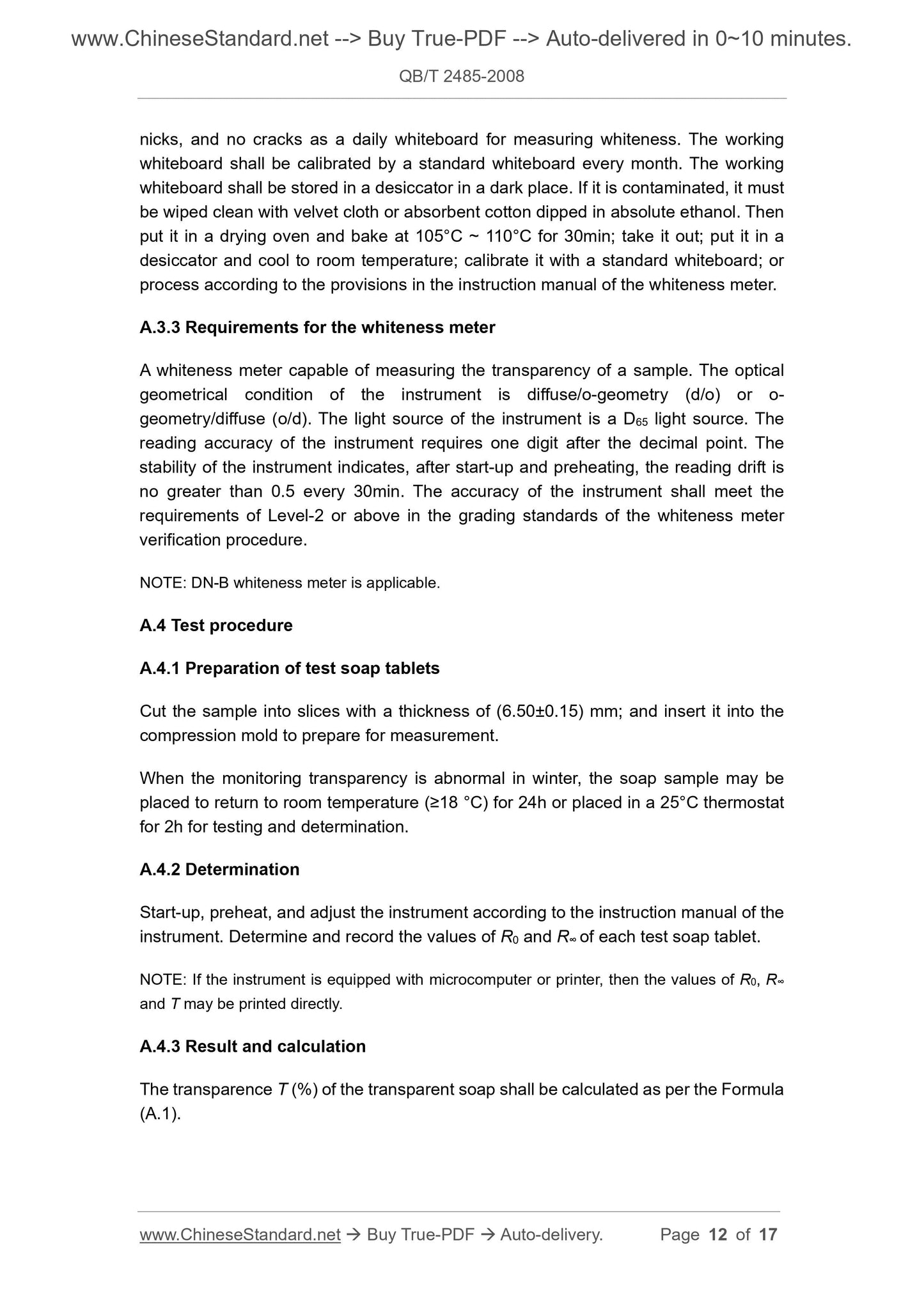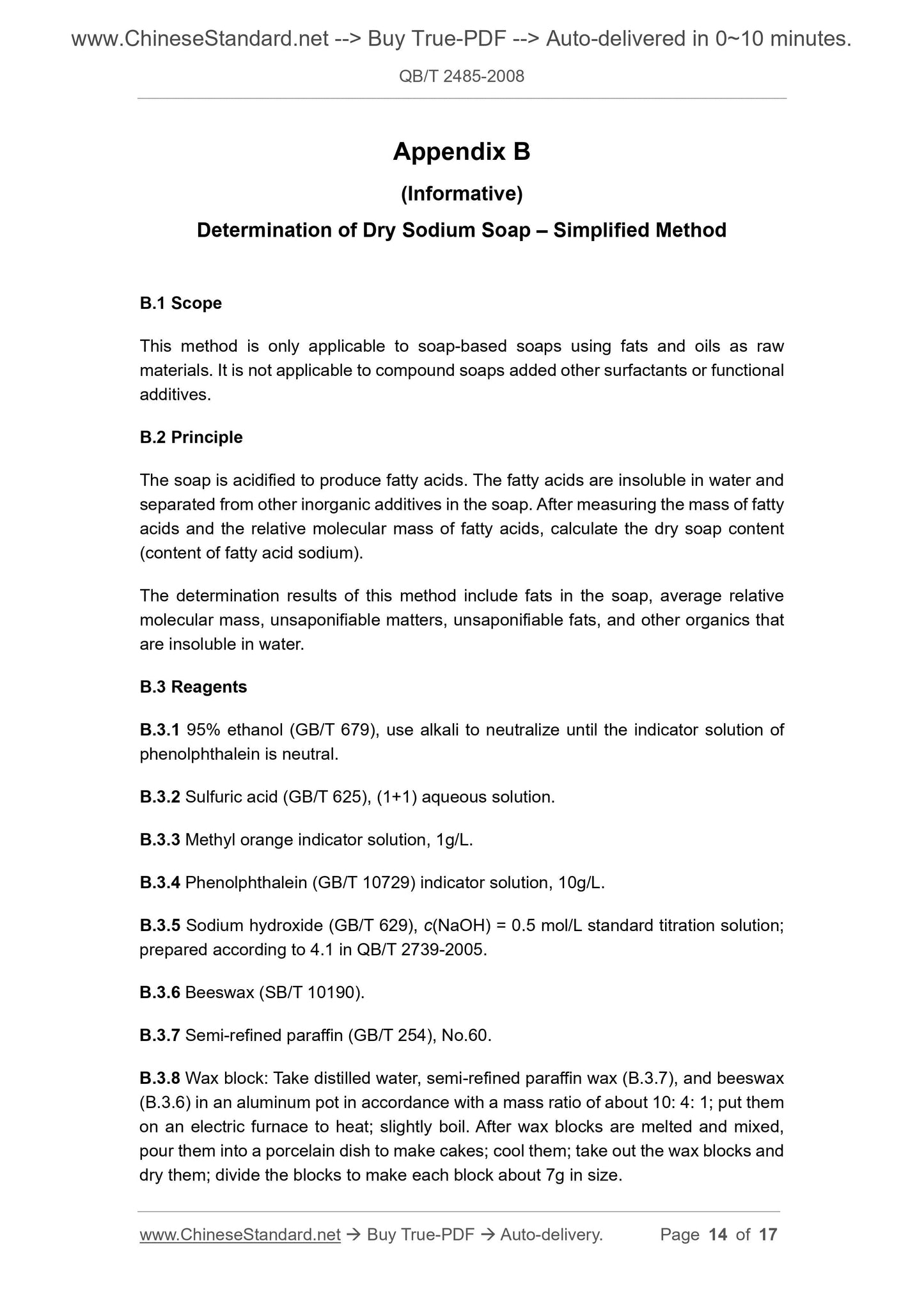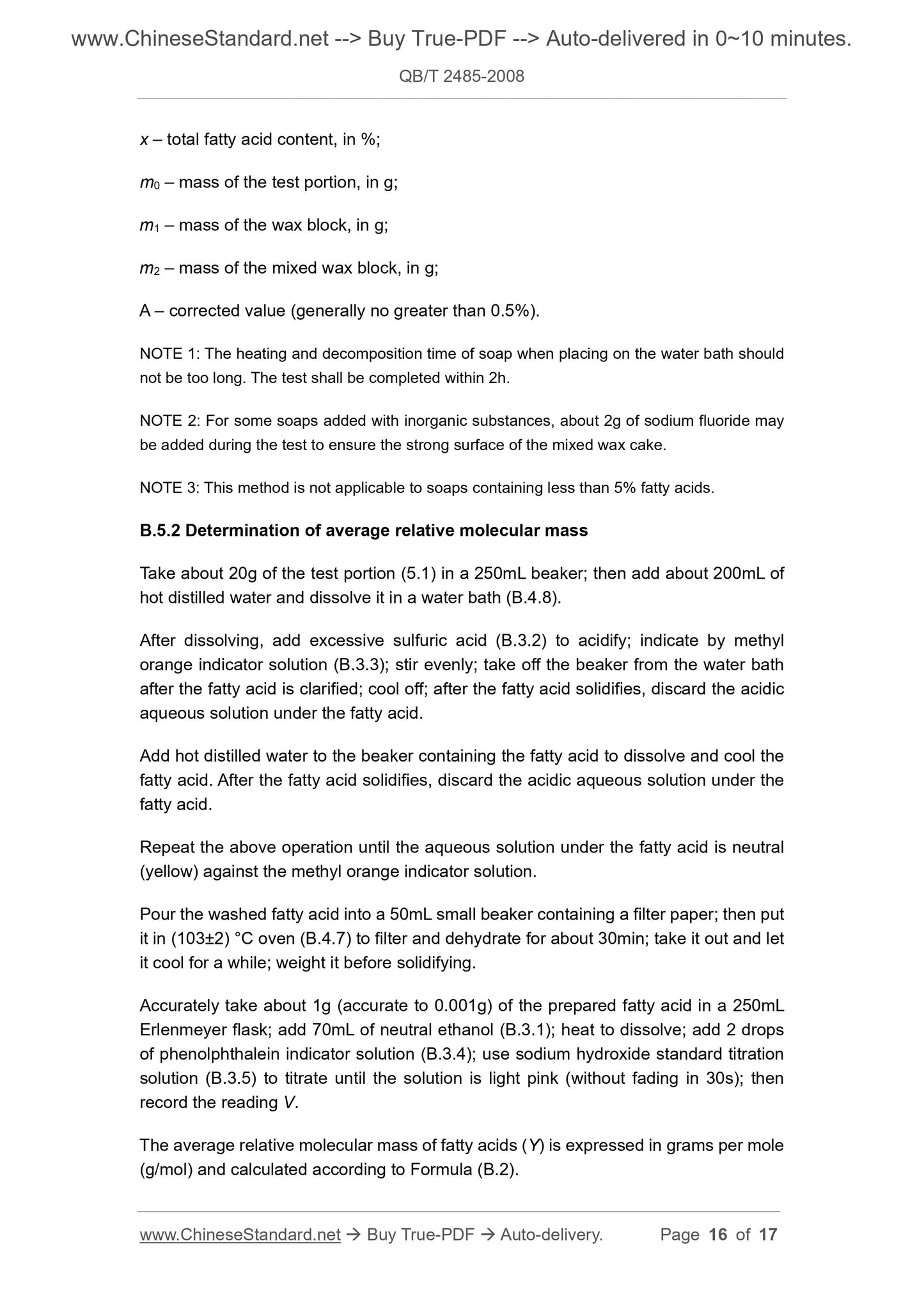1
/
of
8
PayPal, credit cards. Download editable-PDF and invoice in 1 second!
QB/T 2485-2008 English PDF (QB/T2485-2008)
QB/T 2485-2008 English PDF (QB/T2485-2008)
Regular price
$85.00
Regular price
Sale price
$85.00
Unit price
/
per
Shipping calculated at checkout.
Couldn't load pickup availability
QB/T 2485-2008: Toilet soap
Delivery: 9 seconds. Download (and Email) true-PDF + Invoice.Get Quotation: Click QB/T 2485-2008 (Self-service in 1-minute)
Newer / historical versions: QB/T 2485-2008
Preview True-PDF
Scope
This Standard specifies product classification, requirements, test methods, inspectionrules and marking, packaging, transportation, storage and shelf life of toilet soap.
This Standard is applicable to the fatty acid sodium soap produced by the rolling and
the cooling forming processes; and the bulk soap, medicated soap, crystal soap, etc.
mainly made of sodium fatty acid, added with other surfactants, functional additives,
and assistants.
Basic Data
| Standard ID | QB/T 2485-2008 (QB/T2485-2008) |
| Description (Translated English) | Toilet soap |
| Sector / Industry | Light Industry Standard (Recommended) |
| Classification of Chinese Standard | Y43 |
| Classification of International Standard | 71.100.40 |
| Word Count Estimation | 12,192 |
| Date of Issue | 2008-03-12 |
| Date of Implementation | 2008-09-01 |
| Older Standard (superseded by this standard) | QB/T 2485-2000 |
| Quoted Standard | QB/T 2487-2008; QB/T 2623.1-2003; QB/T 2623.2-2003; QB/T 2623.3-2003; QB/T 2623.4-2003; QB/T 2623.6-2003; QB/T 2623.8-2003; QB/T 2739-2005; QB/T 2951; QB/T 2952; JJF 1070-2005; the State Administration of Quality Supervision, Inspection and Quarantine Decree [ 2005 ] No. 75 |
| Regulation (derived from) | ?National Development and Reform Commission Announcement 2008 No.25 |
| Issuing agency(ies) | Ministry of Industry and Information Technology |
| Summary | This standard specifies the soap product categories, requirements, test methods, inspection rules and signs, packaging, transport, storage, shelf life. This standard applies to grind system technology, cooling molding process to produce fat, sodium soap, sodium and fat-based, adding other surfactants, functional additives, massive soap additives made, medicated soap, crystal soap. |
Share
